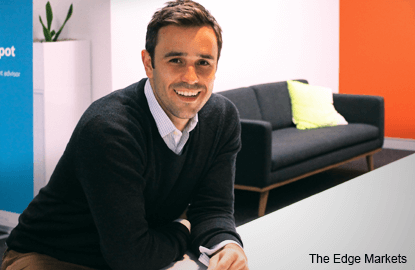
COMPARED with traditional fund managers, robo-advisers charge lower upfront and annual fees (through passive fund management) and offer portfolio diversification via exchange-traded funds (ETFs).
However, Chris Brycki, the founder and CEO of Stockspot Pty Ltd, Australia’s first online automated investment adviser and fund manager says there are a few things for Malaysian investors to look at when investing with a robo-adviser.
First of all, like picking a unit trust fund, an investor should look at the track record of a robo-adviser, such as how long the platform has been around, the experience of its team and the past performance of its portfolios.
“Robo-adviser is a marriage between technology and investment skills. Don’t only look at the front-end website interface, make sure the boxes are ticked on both fronts,” Brycki says.
For instance, Stockspot shows its portfolios’ returns on its website, citing an annual total return of 9.35% to 14.63% on the five portfolios that the firm provides. Most robo-advisors show the projected return of its portfolio after assessing the investors’ risk aversion level and investment period.
Secondly, Brycki thinks the advice given by robo-advisers must be independent and not have an advice bias towards the firm’s own financial products.
“We haven’t seen this happen in the robo-advice space in Australia yet but recently, (Charles) Schwab launched a robo-adviser service in the US that is jam-packed with its own products and riddled with conflicts of interest,” he says.
In March, Adam Nash, the CEO of Wealthfront (one of the biggest robo-advisor firms in the US) on his blog accused Charles Schwab Corp, a US brokerage and banking company which launched its own robo-advisory services, of having a high percentage of cash-holding in its investors’ investment portfolio (between 6% and 30%) that could generate a huge amount of net interest revenue for the company at the expense of the possible return to its investors. Nash also said that the Schwab Intelligent Portfolio generated revenue through cash allocation to its own “smart beta” ETF products and affiliates.
The latter hopped on the robo-adviser bandwagon in June this year, and promoted the fact that no advisory, account service or commission fees are imposed on its investors.
Nash pointed out that “all the ETFs selected by Schwab are either proprietary Schwab ETF products or ETFs from issuers that pay Schwab to use them,” adding that this explanation of the selection of asset classes is buried in its frequently asked questions section without the full awareness of its investors.
Charles Schwab, in an article, rebutted Nash’s allegations and defended its cash-holding position, saying that it is a common strategy applied by other mutual funds. It also pointed out that a 30% cash allocation is designed for investors who have opted to have portfolios with a short-term investment view.
Charles Schwab also took a swipe at the 0.25% fee charged by robo-advisory firms like Wealthfront, saying it is a “sunk cost” leading to a “true drag on performance” of its investment portfolios.
To reduce risk to their portfolios, investors who are already investing via robo-advisory platforms should make sure their money is held under their own name. Investors’ monies kept under a custodian structure may be exposed to additional risk if clients’ funds are not properly segregated.
“The global financial crisis showed that even large and seemingly secure banks contribute meaningful counter-party risk, which is why we [Stockspot] prefer to have clients’ assets beneficially and legally held in their own names,” he says.
Counter-party risk is also known as default risk, which is the risk to each party of a contract that the counter-party will not live out to its contractual obligations.

This article first appeared in Money + Wealth, digitaledge Weekly, on Aug 31 - Sept 6, 2015.